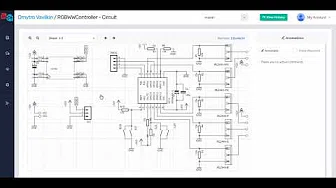Files
-
hardware / bubblegum / bubblegum.brd
-
hardware / bubblegum / bubblegum.sch
-
hardware / hackrf-one / baseband.kicad_sch
-
hardware / hackrf-one / clock.kicad_sch
-
hardware / hackrf-one / frontend.kicad_sch
-
hardware / hackrf-one / hackrf-one.kicad_pcb
-
hardware / hackrf-one / hackrf-one.kicad_sch
-
hardware / hackrf-one / mcu.kicad_sch
-
hardware / jawbreaker / baseband.sch
-
hardware / jawbreaker / frontend.sch
-
hardware / jawbreaker / jawbreaker.brd
-
hardware / jawbreaker / jawbreaker.sch
-
hardware / jawbreaker / mcu.sch
-
hardware / jellybean / jellybean.brd
-
hardware / jellybean / jellybean.sch
-
hardware / lemondrop / lemondrop.brd
-
hardware / lemondrop / lemondrop.sch
-
hardware / licorice / licorice.brd
-
hardware / licorice / licorice.sch
-
hardware / LNA915 / LNA915.kicad_pcb
-
hardware / LNA915 / LNA915.sch
-
hardware / lollipop / lollipop.brd
-
hardware / lollipop / lollipop.sch
-
hardware / marzipan / baseband.sch
-
hardware / marzipan / frontend.sch
-
hardware / marzipan / marzipan.kicad_pcb
-
hardware / marzipan / marzipan.sch
-
hardware / marzipan / mcu.sch
-
hardware / neapolitan / baseband.sch
-
hardware / neapolitan / frontend.sch
-
hardware / neapolitan / mcu.sch
-
hardware / neapolitan / neapolitan.kicad_pcb
-
hardware / neapolitan / neapolitan.sch
-
hardware / operacake / operacake.kicad_pcb
-
hardware / operacake / operacake.sch
Last update 2 years 9 months
by Gianpaolo Macario
opera_cake_hardware.rst======== Hardware ======== Banks ~~~~~ The ports on Opera Cake are grouped in two banks (or "sides"), one on each end of the board. Bank A consists of ports A0 through A4 while bank B consists of ports B0 through B4. Ports ~~~~~ Opera Cake has two primary ports, A0 and B0, each of which can be switched to any of eight secondary ports, A1-A4 and B1-B4. Each primary port is always connected to one secondary port. By default, A0 is connected to A1, and B0 is connected to B1. It is not possible to connect both primary ports to secondary ports in the same bank at the same time. LEDs ~~~~ Port selections are indicated by LEDs next to each port's connector. Port A0 and the secondary port connected to A0 are indicated with a green LED. Port B0 and the secondary port connected to B0 are indicated with a yellow LED.








